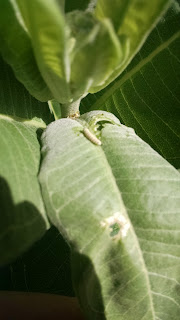Celebrate National Pollinator Week! June 20 - 26, 2016!
Abundant Design is Celebrating with a Special
FREE OFFER!
Details below but for now lets talk Pollinators!
Did you know that pollinators, like bees, butterflies, bats, birds, and more, are estimated to play a key role in one of every three bites of food we eat?
Plus they are beautiful! Enjoy this clip from filmographer Louie Schwartzberg
National Pollinator Week began nine years ago with unanimous approval in the US Senate highlighting the urgent need to address the declining populations of pollinators and the ecological and agricultural roles they play.
Monarch butterfly populations have been critically low for the last several years. Honeybee population and health troubles are regularly in the news and our native bees are also facing many challenges. 30% of our 45 species of native bumble bees are at risk of extinction. These losses can also have serious implications for our agriculture systems (=our food).
I've mentioned a study before showing increased yields in Blueberries, and research out of Texas has demonstrated cotton yield increases of 18% with improved pollinator habitat.
But Corn & Soybeans?
Iowa's largest commercial crops corn and soybeans don't rely on pollinators like many other crops. However, new research by Iowa State's Matt O'Neal suggests growing more bee-friendly habitats could prove to be a worthwhile goal for soybean growers looking to improve yield.
"Three examples of earlier research include:
- A short-term Canadian study found bees’ presence was associated with much higher yields in food-grade soybeans.
- Australian researchers demonstrated yield increases of 10-40% in honey bee-pollinated soybeans, compared to self-pollinated beans.
- In 2005, a Brazilian research project compared soybean seed production with and without honey bee colonies by raising plants in cages, and reported 50% higher yields when bees were present."
What can YOU do?
1. Plant Food, both nectar plants and host plants for butterfly larvae. The flowers of many culinary herbs are attractive to pollinators, like the Sage, Chives and Thyme pictured. Milkweed is a great plant for monarch larvae, and Swamp and Butterfly varieties are quite attractive in plantings. Echinacea, or Purple Cone Flower is a favorite of many pollinators.
2. Provide Water as they get thirsty too. A water feature or birdbath with a few stones can provide a shallow drinking area and also a place to bask in the sun.
BONUS - Supplemental food, like nectar feeders, sliced oranges or jelly can also attract colorful Baltimore Orioles or Rose-breasted Grosbeaks.
3. You could also Share a Home like this bee hotel. You can build or purchase many different styles to fit your landscape. Also, consider delaying Fall clean-up or doing so less extensively as some pollinators and other beneficial insects hibernate in hollow stems or leaf piles,
4. Avoid Pesticides as many are as harmful to good bugs as well, even "organic" ones like diatomaceous earth. Clover is good for your grass and a favorite of honeybees. Dandelions provide an early source of nectar.
For even more tips visit these great resources.
The Xerces Society has a handy list of native plants that are quite attractive to butterflies, bees and more. These plants are targeted to Iowa and other parts of the Midwest. Visit Xerces.org for more information or if you would like a plant list for your area.POLLINATOR WEEK 2016 FREE OFFER!
Any design & install scheduled this week will include a FREE Host Plant and Nectar Plant that will qualify your landscape for the Blank Park Zoo's Plant.Grow.Fly program!
Have a great Pollinator Week and Be a Friend to Pollinators!










No comments:
Post a Comment